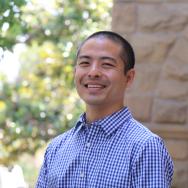The following is Part 6 of a multiple-part series. To read previous installments in this series, please visit the following articles: Part 1, Part 2, Part 3, Part 4, and Part 5.
On December 8, 2020, January 19, 2021, March 16, 2021, May 18, 2021, and July 20, 2021, 91│į╣Ž posted five articles that highlight reflections from 41 students on the question, ŌĆ£What does it mean to be an American?ŌĆØ Part 6 features eight additional reflections.
The free educational website ŌĆ£ŌĆØ offers six lessons on immigration, civic engagement, leadership, civil liberties & equity, justice & reconciliation, and U.S.ŌĆōJapan relations. The lessons encourage critical thinking through class activities and discussions. On March 24, 2021, 91│į╣ŽŌĆÖs Rylan Sekiguchi was honored by the Association for Asian Studies for his authorship of the lessons that are featured on the website, which was developed by the Mineta Legacy Project in partnership with 91│į╣Ž.
Since the website launched in September 2020, 91│į╣Ž has invited students to review and share their reflections on the lessons. Below are the reflections of eight students. The reflections below do not necessarily reflect those of the 91│į╣Ž staff.
Aime Chao, California
The American Dream is a set of ideals: democracy, liberty, opportunity, and equality. These ideals are not necessarily the reality; for example, my Japanese American grandmother was unconstitutionally incarcerated during WWII. Yet, the same ideals made it possible for my family from East Asia to build a life in the United States. The juxtaposition of the American Dream and the facts on the ground unveils the characteristic of America that distinguishes what it means to be AmericanŌĆöthat everyone has a voice. I am growing up in a time when my country is increasingly polarized, and it can be challenging to identify or be identified with being American. However, the perseverance involved in bettering our future by bridging our reality with our ideals makes me proud of my identity as an American.
Jiahao Guo, Ohio
America is divided. And the division breeds inequality. But there is an often-ignored divide, a geographical one: Rural America vs. Urban America. As an Ohioan, the stark differences between the two Americas are apparent, encompassing all aspects of life, regardless of race or culture. Compared with urban America, the average income is much lower. Infrastructure is ignored. Education opportunities are far less accessible. And rural America is often forgotten or even dismissed by the rest of the country. ThereŌĆÖs even a term for this: Flyover States. States so unimportant you can just fly over them. I am constantly reminded of this divide. Some say that this is just a fact to be accepted. But in the land of opportunity, we must do our best to bring about a more equal landscape.
Noah Kurima, California
America is a unique experiment. Our founding fathers concocted a country not based on race but on the unfathomable-at-the-time ideals of freedom, equality, and opportunity. To me, to be an American means to aspire for these ideals during smooth sailing, but also when faced with adversity. There is so much noise right nowŌĆöthe pandemic, school shootings, the recent rise of racial hate and violence. But we must look around and observe the appalling abuses of authoritarian regimes around the world. We must acknowledge the immense power of our rights and freedoms, as well as their vulnerability. We must be willing to spend the long nights in the laboratory that is our democracy, avoiding corrosive missteps and working to perfect the seemingly volatile formula for liberty and justice for all.
Riya Narayan, Tennessee
The American Dream is the idea that our country fosters equality, peaceful opportunity, and the freedom to pursue life. It is through this simple notion that millions of people immigrate to the United States every single year, and itŌĆÖs why my family immigrated here in 2011. What does this American Dream stand for? For me, it symbolizes the peaceful unity of people from different cultures, backgrounds, and identities. It represents the sharing of ideas and a drive for positive change. For my family, it represents a world of opportunity. My parents and I became American citizens in May 2019, and ever since, we have worked to uphold this purpose: to be a vessel for the innovation, creativity, and equality our country brings for the betterment of others. This, for me, is what it means to be an American.
Jack Pelster-Wiebe, Minnesota
I have a complicated relationship with America and American-ness. I am not legally a citizen, but I am a white person whoŌĆÖs lived in the United States for the majority of my life. I also speak English with an American-adjacent Canadian accent, and so IŌĆÖve rarely been treated as though I donŌĆÖt belong here. But still, I am not an American. When I think about what divides my American friends from me, I find largely nebulous contradictions that canŌĆÖt apply to everyone. Then maybe there is no one defining characteristic of an American, nothing that makes them any more or less citizen than the neighbors around them. ItŌĆÖs up to each person to define themselves what makes them American, decide whether they want to tie themselves to the land, border, culture, or whatever feels like ŌĆ£AmericaŌĆØ to them.
Kevin Phan, Hawaii
I believe it is the cultural practices of every nation that make them distinct. It is what makes the German people German. It is what makes the Chinese people Chinese. Our culture is what makes us American. One doesnŌĆÖt need to enjoy every single tenant of American culture, but rather enough of it to where it has a strong influence in our lives. People around the world can enjoy things like the NBA, the Kardashians, and Taylor Swift, however, it is only Americans who are able to enjoy those things and more. Thus, it is not an appreciation of our history, nor our citizenship that make us American. It is the love and interests that we culminate through exposure and experience that makes us a part of this nation.
Kasha Tyranski, Florida
ŌĆ£The frog is almost five hundred million years old. Could you really say... that AmericaŌĆ” will last as long as... the frog?ŌĆØ I can respond to Catch-22ŌĆÖs question with one word: yes. Perhaps not a physical AmericaŌĆöbut the essence of what it means to be American will outlive the frog. To be American is to be a quiltŌĆöa patchwork of struggles, triumphs, and dreams that transcend time. America is my ancestors joining za chlebem with whispers of hope hidden in their coat folds. America is speaking in Tajiki to Dushanbean students, describing the skyscrapers of the place I call home. America is opportunity, dynamism, reflectiveness, and reconciling the past and present. It means being part of a story greater than myselfŌĆöone that will continue being woven, with or without frogs.
Andy Wattanaskolpant, Tennessee
The concept of being American is rooted in complexity, curiosity, and change. It is based on the notion that our uniqueness and individuality help to unite us. Indeed, our country has been marred by a history of injustice that still impacts us today, however, the fundamental idea of being American is the eagerness to push for change. Over the years, I have noticed the dynamic change happening in AmericaŌĆöwithin the police system, the political environment, the food industry. There is no doubt that the rudimentary attitude of change is continuing to perpetuate inside the minds of Americans. I find myself realizing that utilizing love as the drive for change makes the fight all the more worth it. To love is what makes me most American.


 FSI researchers consider international development from a variety of angles. They analyze ideas such as how public action and good governance are cornerstones of economic prosperity in Mexico and how investments in high school education will improve ChinaŌĆÖs economy.
FSI researchers consider international development from a variety of angles. They analyze ideas such as how public action and good governance are cornerstones of economic prosperity in Mexico and how investments in high school education will improve ChinaŌĆÖs economy.





























